Prepare for Disasters with a Simulated Experience Tour at Ikebukuro Life Safety Learning Center
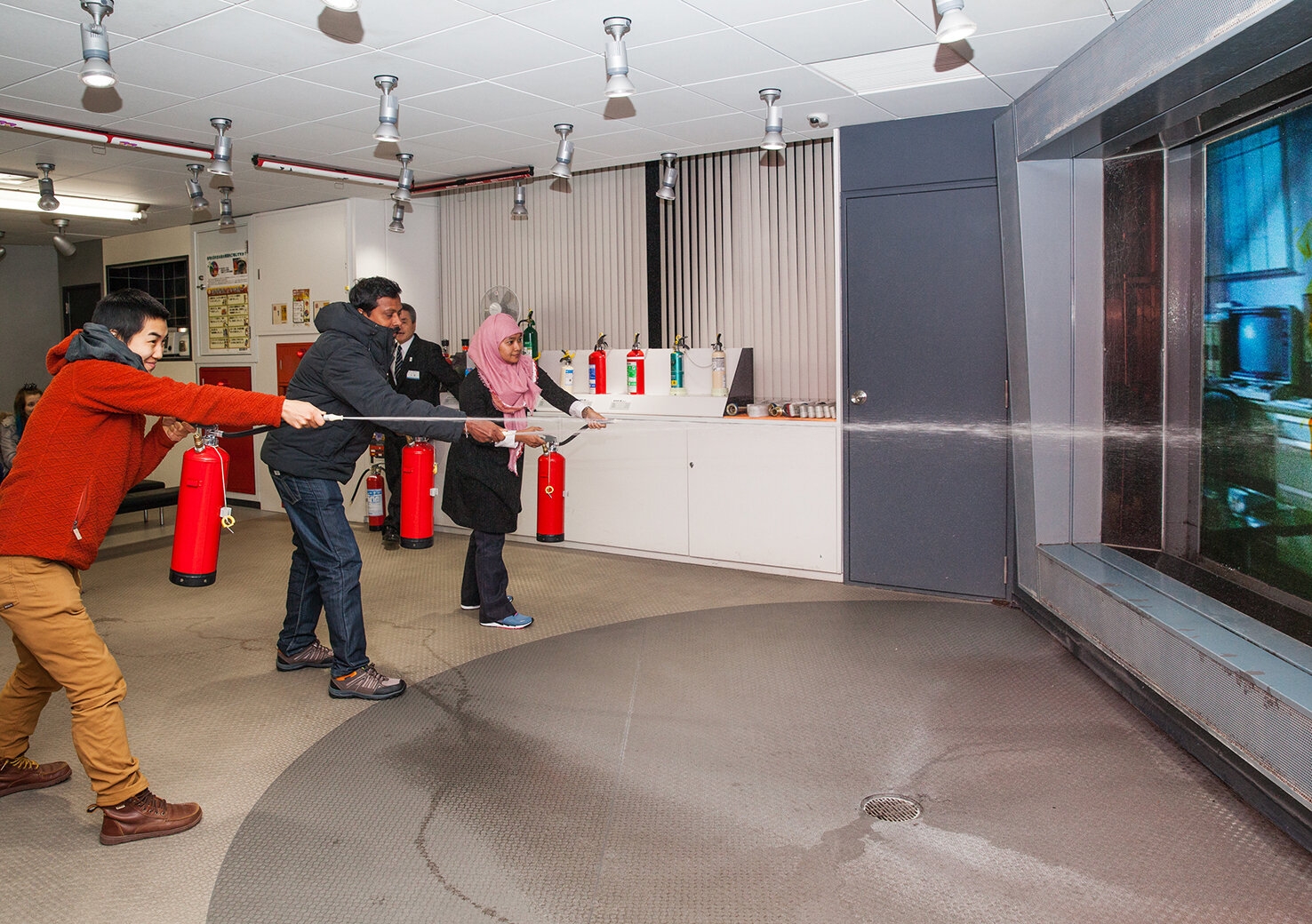
Known as an earthquake-prone country, Japan has experienced many disasters. When living in this country, it is necessary to learn about earthquakes and disasters so one can make calm decisions in the case of an emergency. Seven years have passed since the Great East Japan Earthquake of March 11, 2011. We visited the Ikebukuro Life Safety Learning Center to heighten our awareness about disaster prevention. Operated by the Tokyo Fire Department, the facility allows visitors to experience various safety drills through simulated tours, for free. On the first tour of the day, at 9:30am, several overseas tourists attended. Tours feature four themes, three of which were part of our tour program: fire extinguishers, smoke from fires, and earthquakes, including a video about the Great East Japan Earthquake of 2011. An instructor and former fire department official taught visitors the correct way to use a fire extinguisher and evacuate in case of fire, we well as what happens during an earthquake and how to react to it.

After learning about the anatomy of fire extinguishers and how they work, visitors were asked to use them. When an image of fire appeared on the screen, they were instructed to yell "Kajida! (Fire!)" to notify those around them, hold the handle of the extinguisher, and pull out its safety pin. Then they held the hose near its nozzle, leaned over to aim at the fire, and hold the lever down. It is important to aim at the origin of the fire and not at the tip of the flame. Also, each extinguisher lasts for only about half a minute, and should be used when the flame is small. Once the fire has become big, it is best to give up fighting it, and evacuate as soon as possible. In Japan, 119 is the number to dial to reach the fire department.
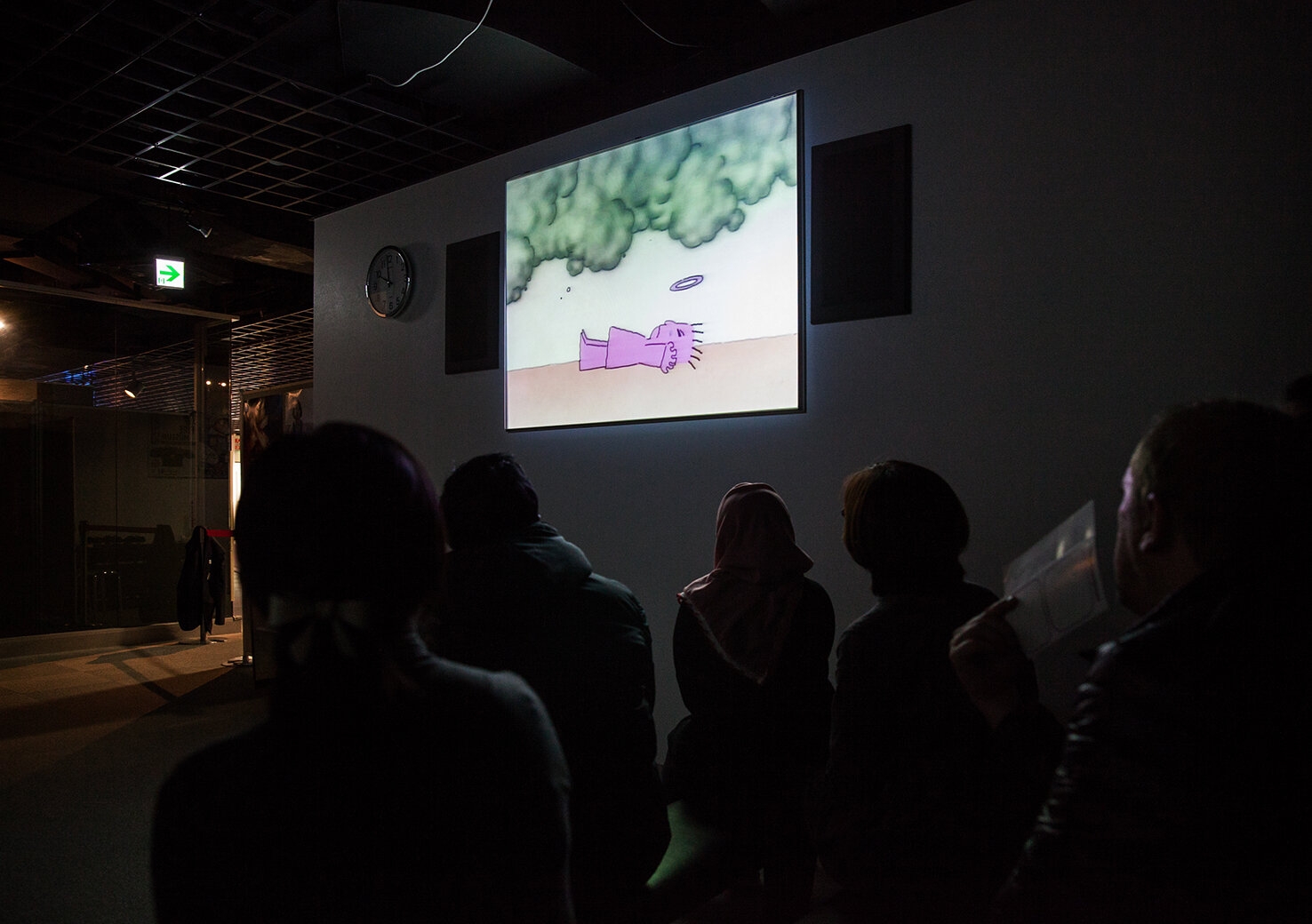
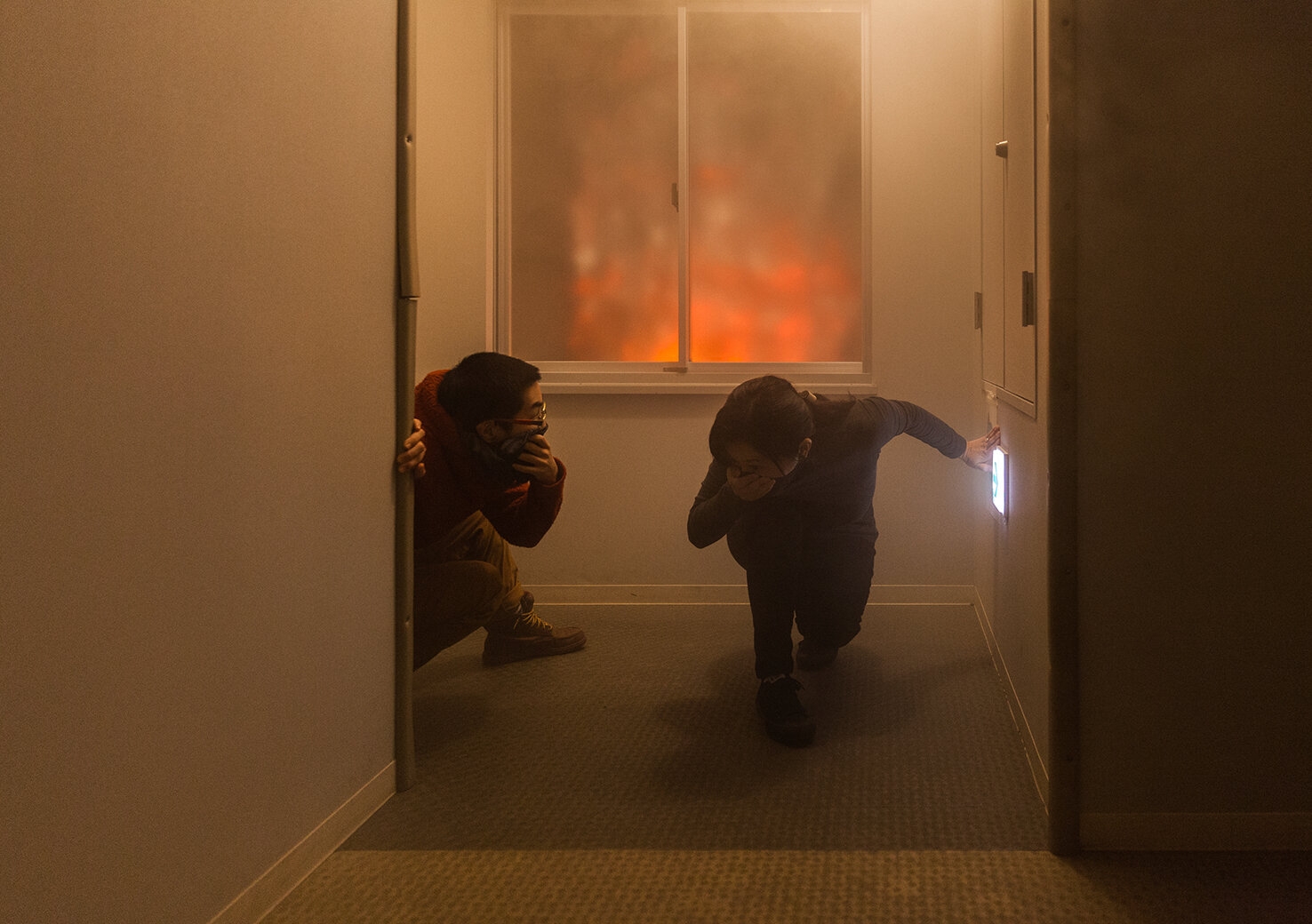
At the learning section about smoke, visitors watched an animation about evacuation procedures that should be taken while inside a building on fire. Since smoke rises, the first thing to do is to get down on your knees, and cover your nose and mouth with a handkerchief. If the room is filled with smoke and it is difficult to see, reach out for a wall and look for emergency exit signs. Since there could be fire on the other side of doors, touch each door with the back of your hand and open it slowly. If someone is left behind, do not try to save them on your own; let firefighters handle it. To review what they learned from the animation, visitors were divided into groups and then entered a maze that consisted of a number of rooms. When the fire alarm went off in one of the dark rooms where smoke and fire was simulated, visitors started a fire drill. There are dead ends in place to test understanding of evacuation but when the visitors followed the emergency exit signs, it did not take long for them to exit the maze. The air is especially dry during winter time, so it is important to make sure that stoves and electrical appliances are turned off before evacuating.
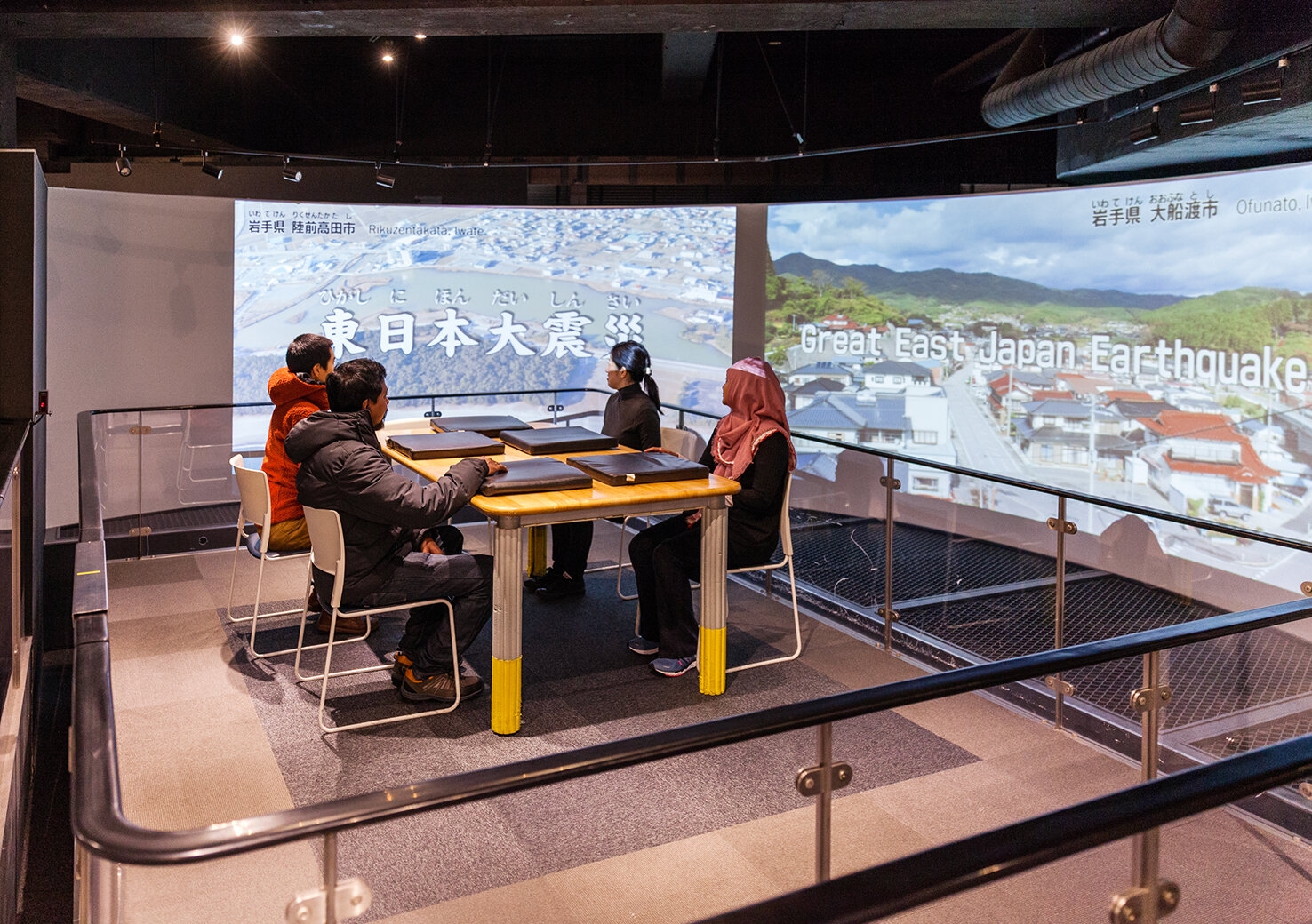
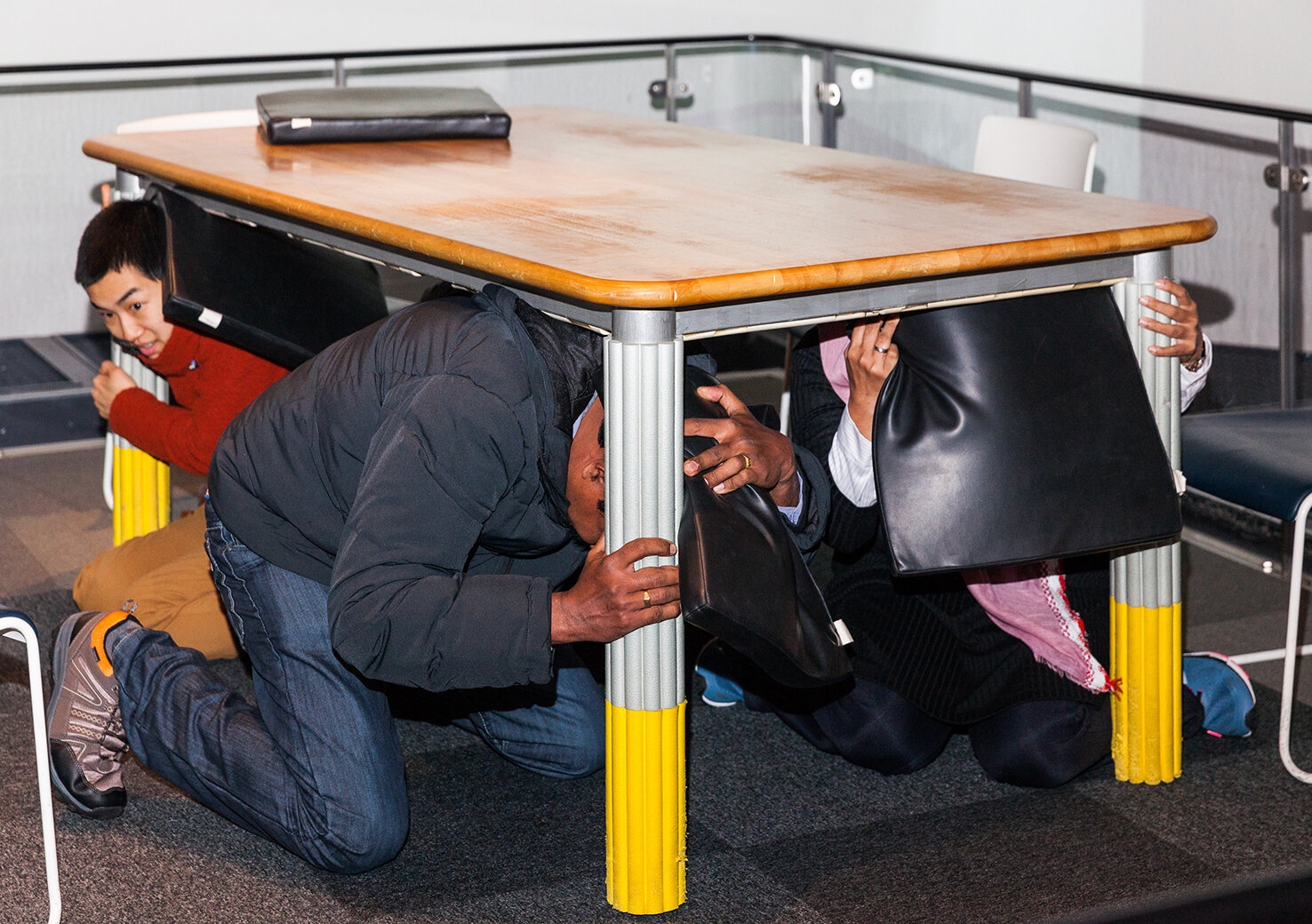
Earthquake was the last simulated experience. On a wide screen, visitors watched a video about how earthquakes occur, what precautionary measures should be taken, and how to react in case of a sudden tremor. Afterwards, they mounted a device that reproduces lateral vibration set to level 7 on the seismic intensity scale, which was close to what the people of the Tohoku region felt during the Great East Japan Earthquake.
If you are inside a building when an earthquake occurs, it is best to go under a table and grasp the upper part of its leg while protecting your body. If you are outdoors, it is recommended you cover your head and watch out for anything falling from above. Inside houses it is important that shelves and other furniture are fixed in place to help prevent them falling over in the case of an earthquake.
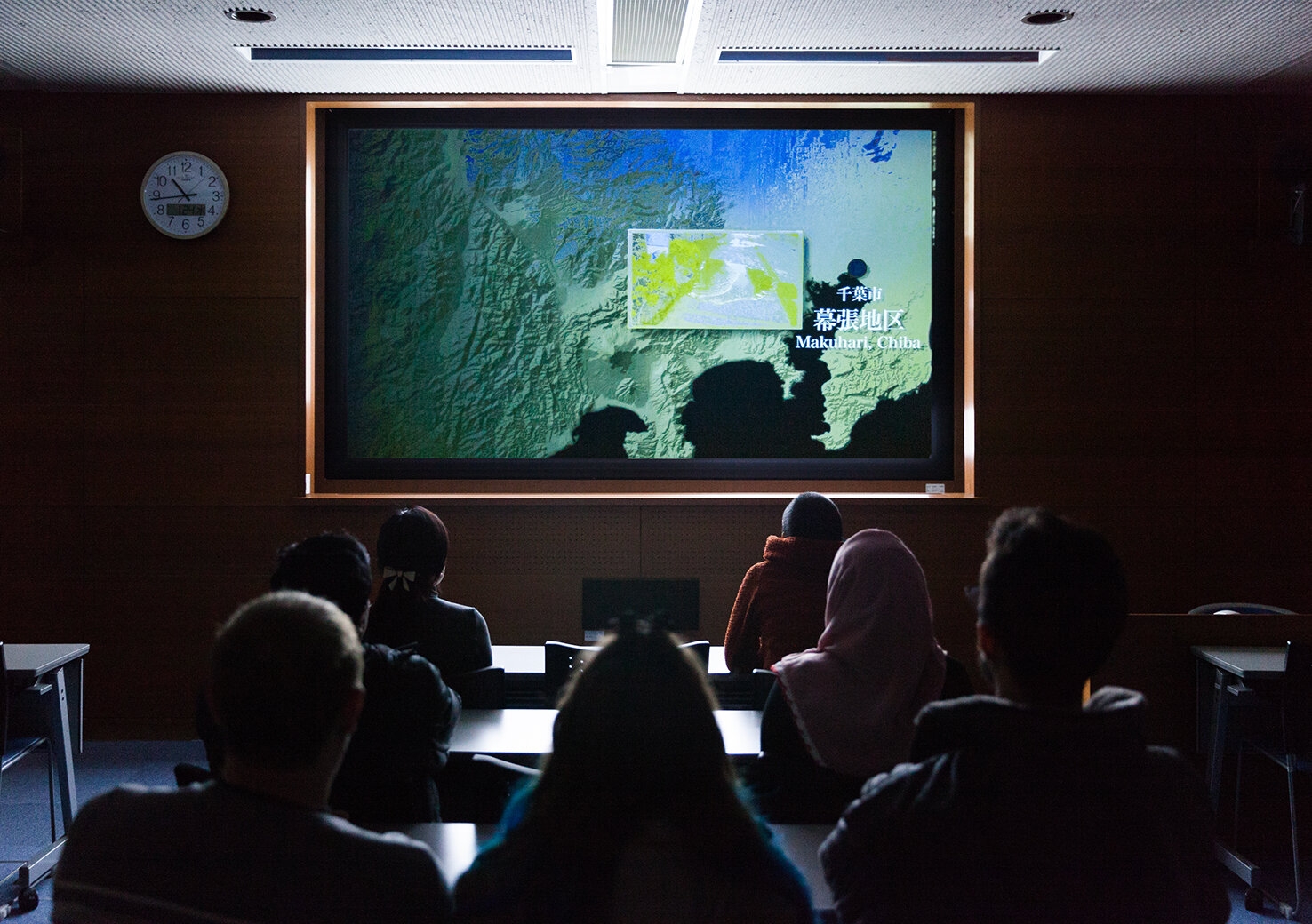
The 100-minute tour came to a close after a video screening about the Great East Japan Earthquake.
There are English subtitles or voice-overs for all the videos shown, but tour instructions are given only in Japanese, so it is suggested you bring an interpreter if needed. Apart from the experience related to fire extinguishers, and the smoke and earthquake simulations, visitors can choose a fourth theme: emergency medical care or disaster prevention video. If preferred, they can opt for a shorter tour that involves only two themes: earthquake simulation and the disaster prevention video.
For most of the simulations, there is a minimum age for children. The earthquake simulation is for those aged three or older, the fire extinguisher experience is for grade 4 and over, and the emergency medical care is for grade 5 and over. For those who are not participating in the tour, free learning areas are available. These include a machine to practice calling 119 and disaster prevention games. Indeed, there is something to learn and do for everyone at Ikebukuro Life Safety Learning Center. Just make sure to check the tour availability over the phone and make a reservation when attending in a group.

Ikebukuro Life Safety Learning Center
Address: Ikebukuro Fire Department 4F, 2-37-8 Nishi-Ikebukuro, Toshima-ku, Tokyo, 171-0021
Access: 5-minute walk from JR Ikebukuro Station (West or Metropolitan Exit)
Open hours: 9am-5pm, last entry is at 4:15pm
Tour hours: 9:30am-11:10am, 1pm-2:40pm, 3pm-4:40pm)
Short tours: 11:10am-noon
Closed: Tuesday, 3rd Wednesday of the month (closed on the following day if it is a national holiday), and over New Year (December 28-January 4).
Admission: Free
Tokyo Fire Department website (English, Chinese, Korean, Thai, and Tagalog): www.tfd.metro.tokyo.jp/eng
Ikebukuro Life Safety Learning Center website (Japanese): https://tokyo-bskan.jp/en/bskan/ikebukuro/
Tel: 03-3590-6565 (9am-5pm)
Fax: 03-3590-6843
Email: ikebukuro@tokyo-bousai.or.jp
*This article was posted on the Life in Tokyo website operated by the Tokyo International Communication Committee on February 26, 2018.
